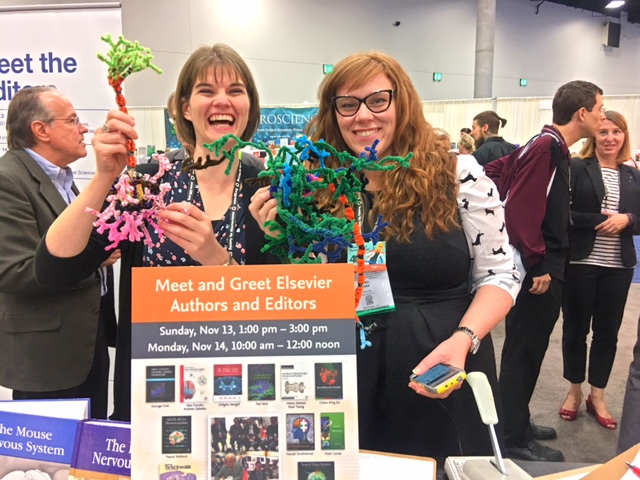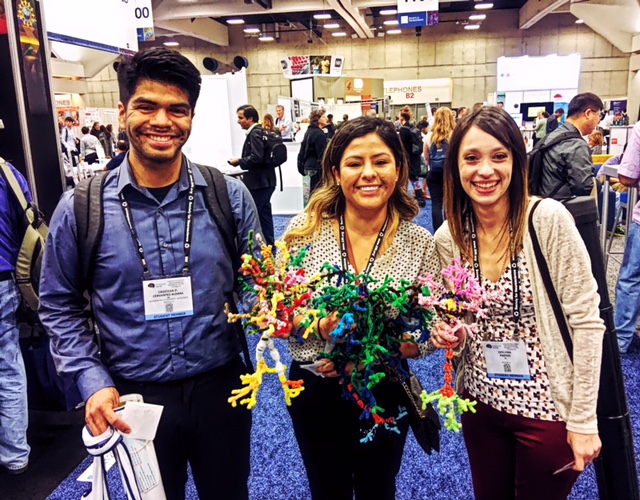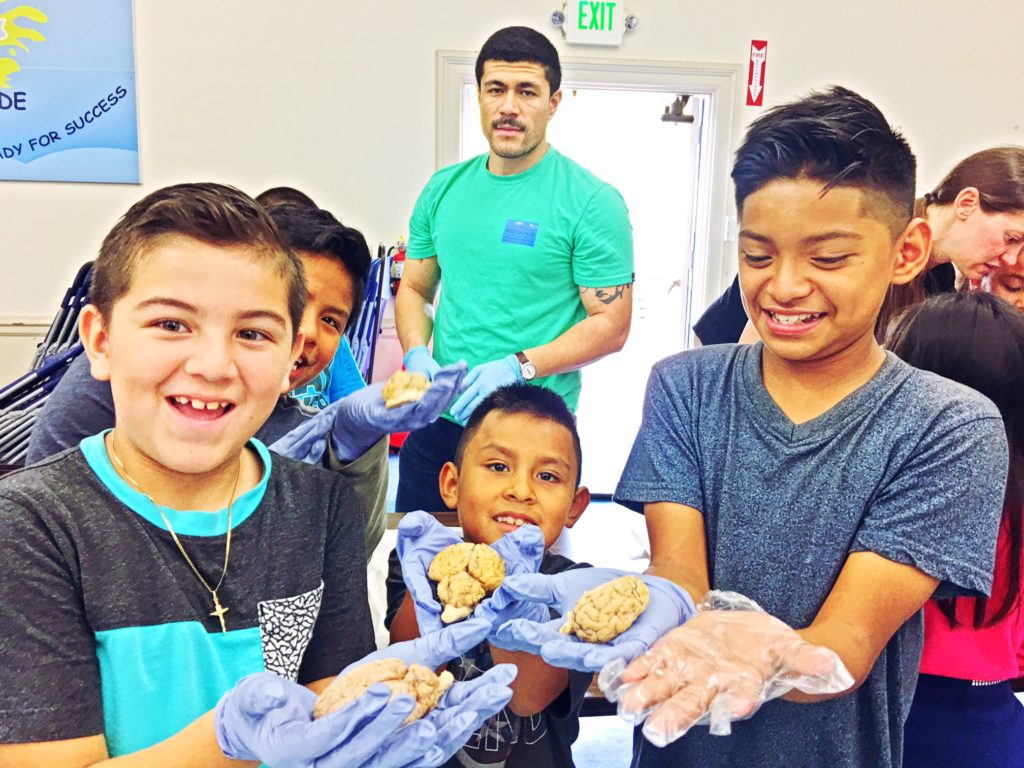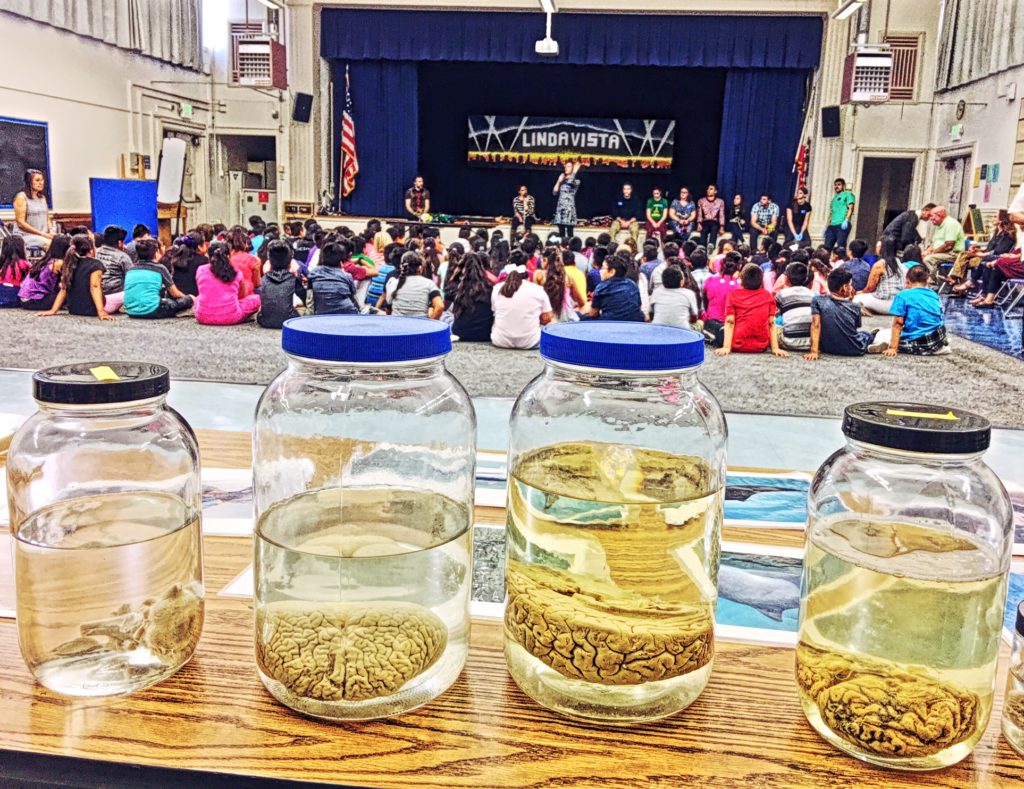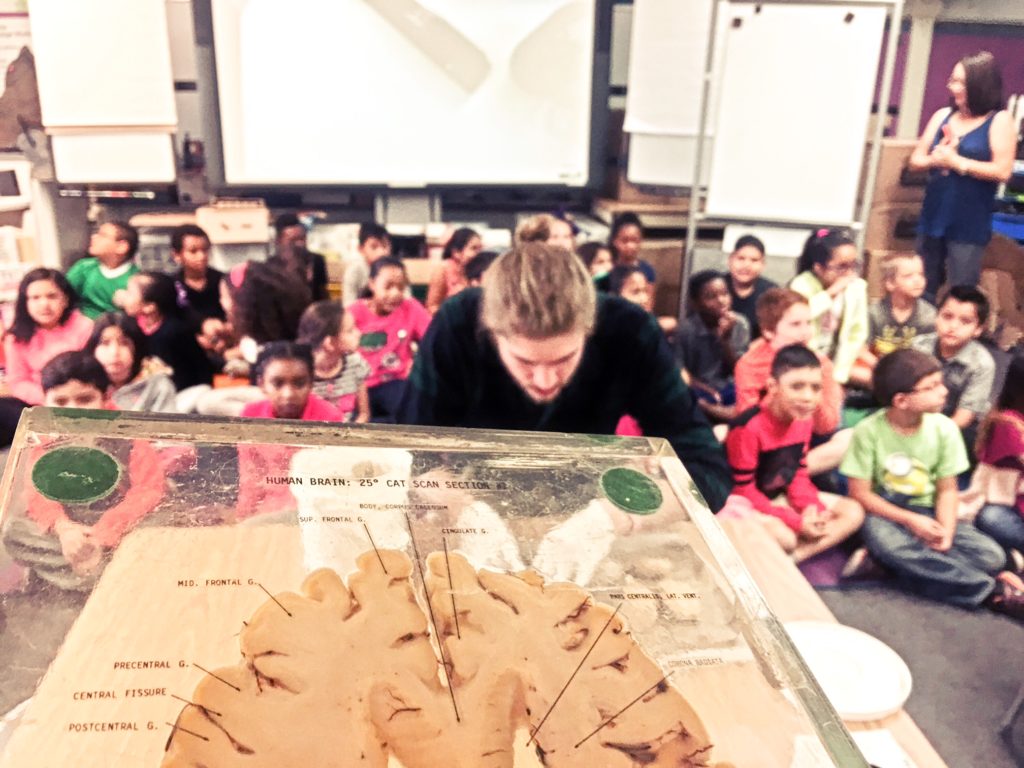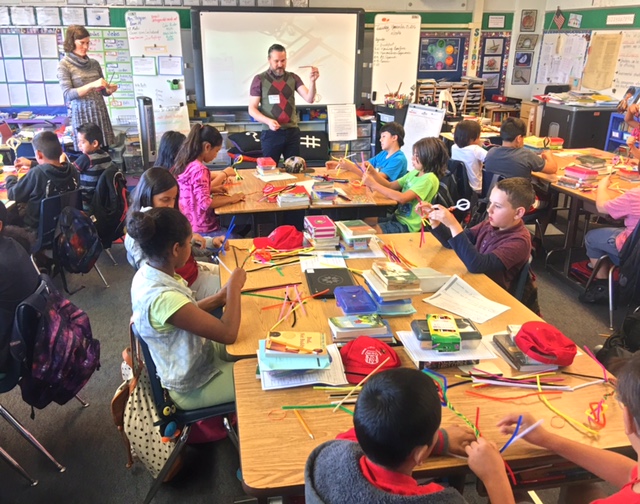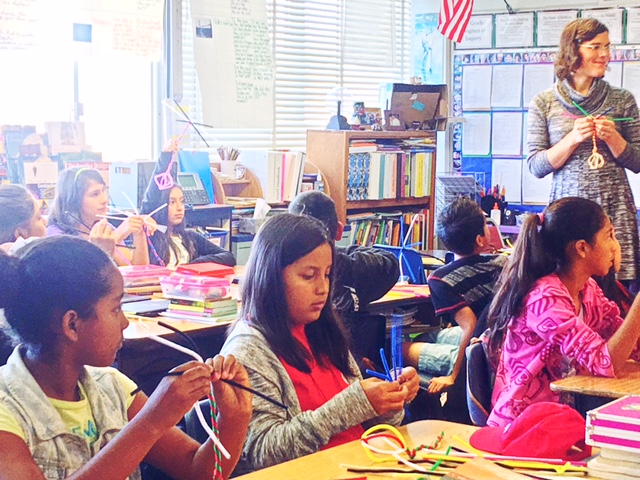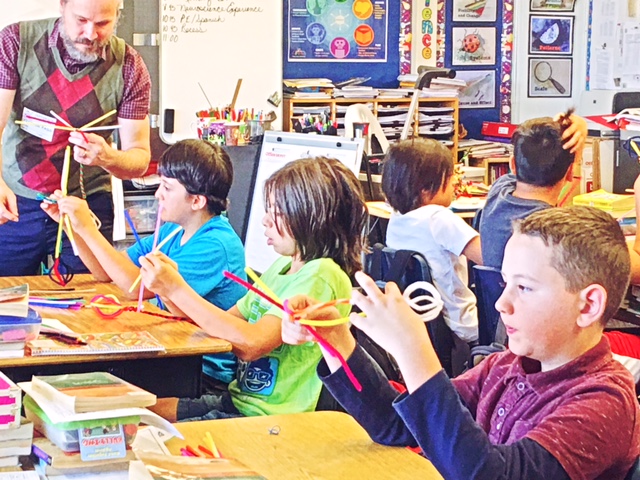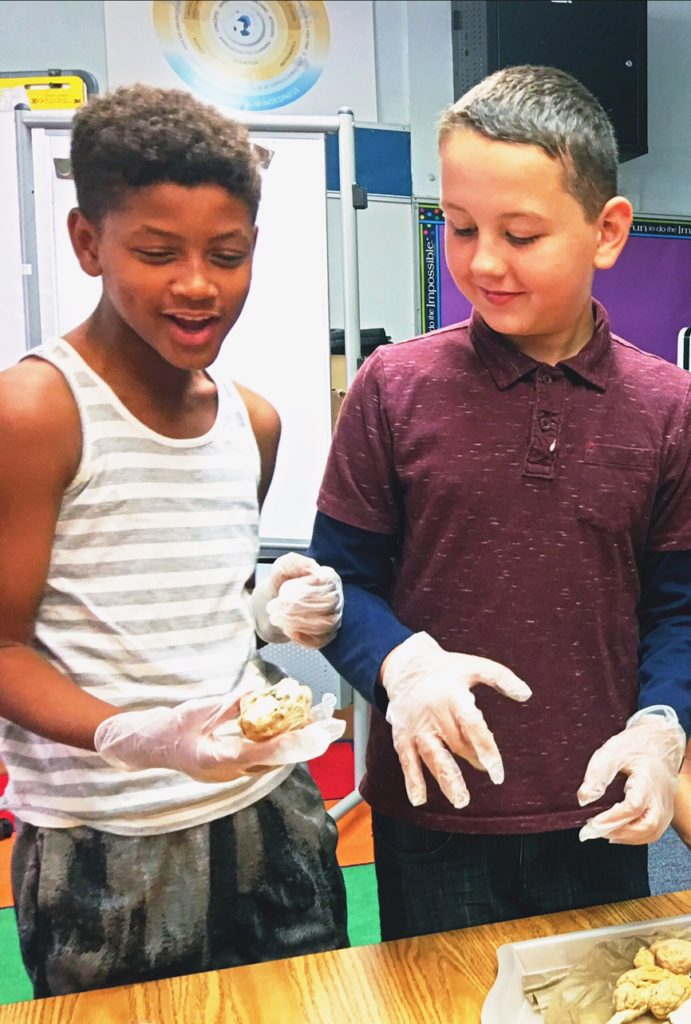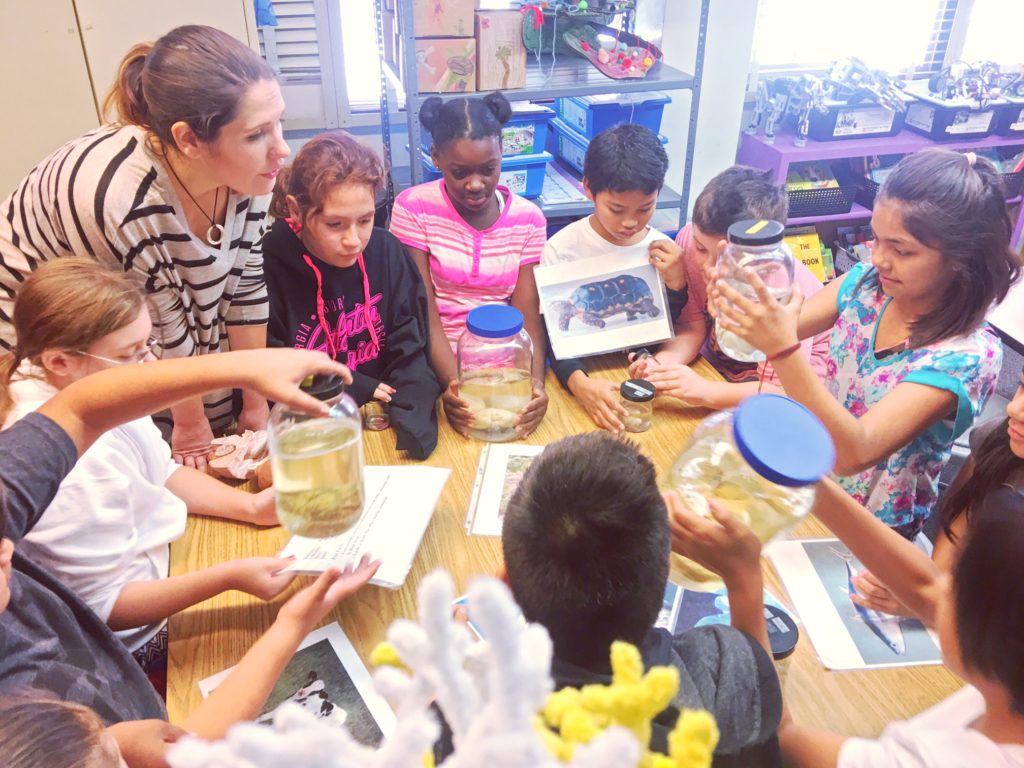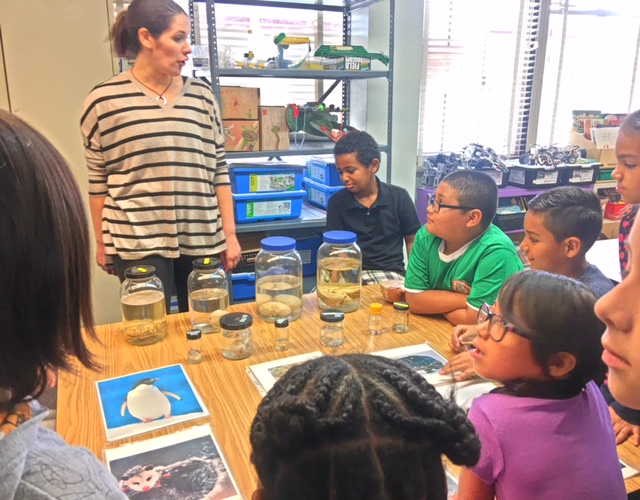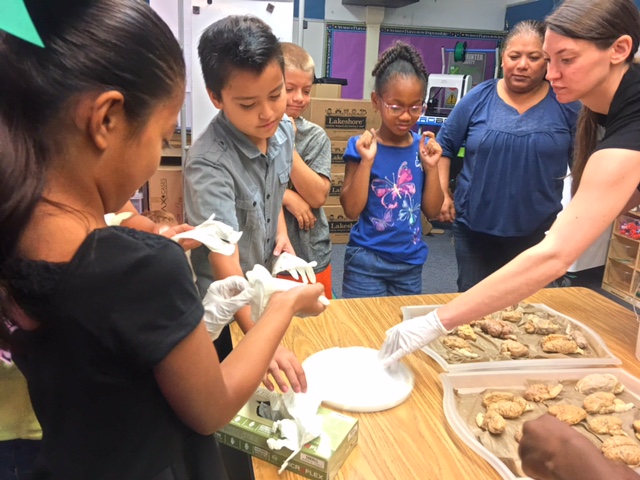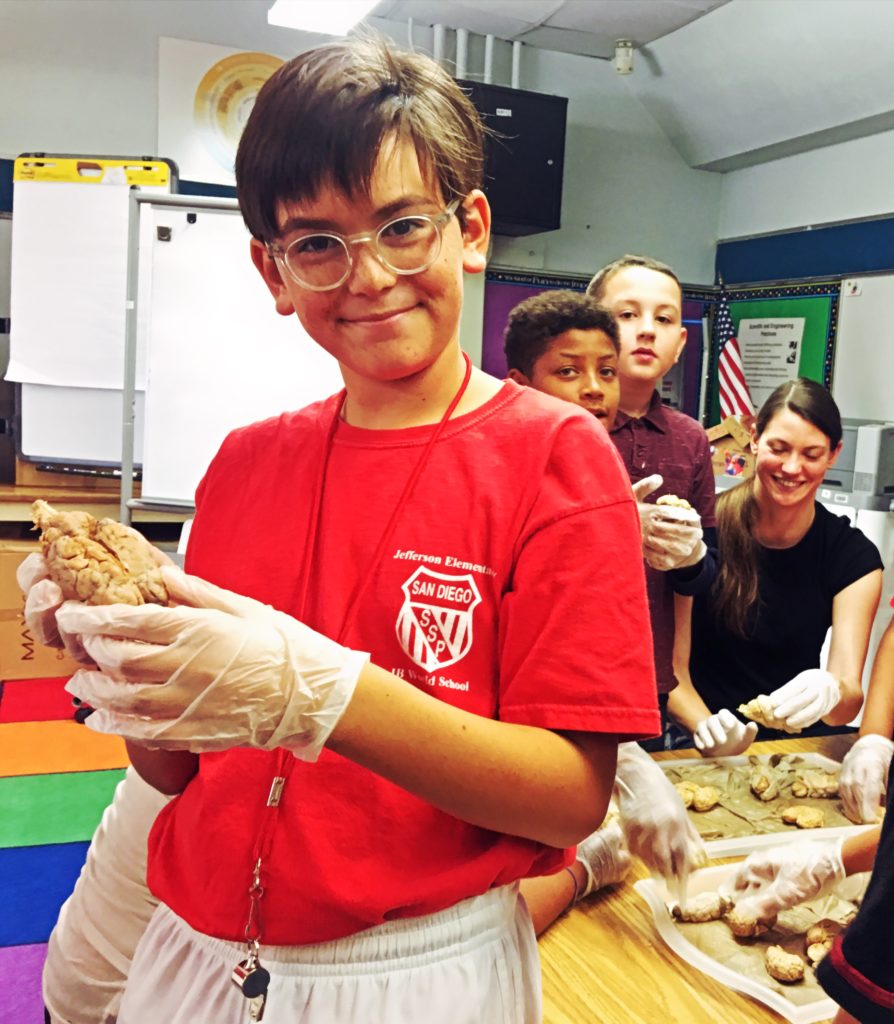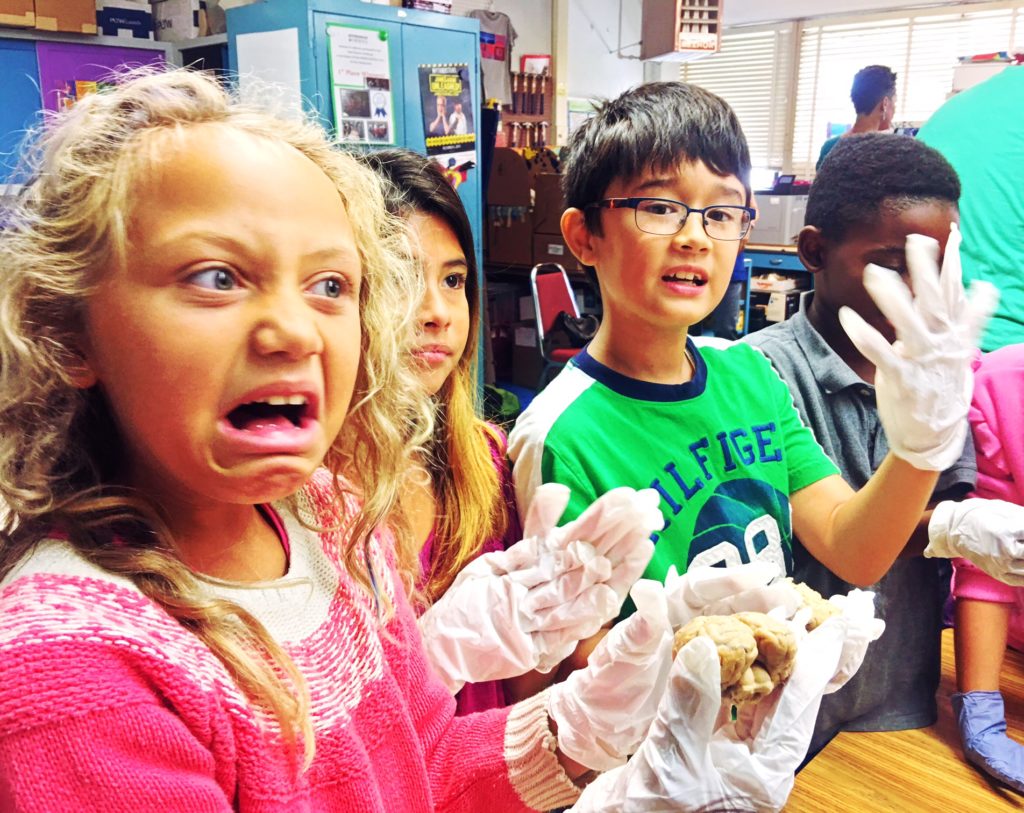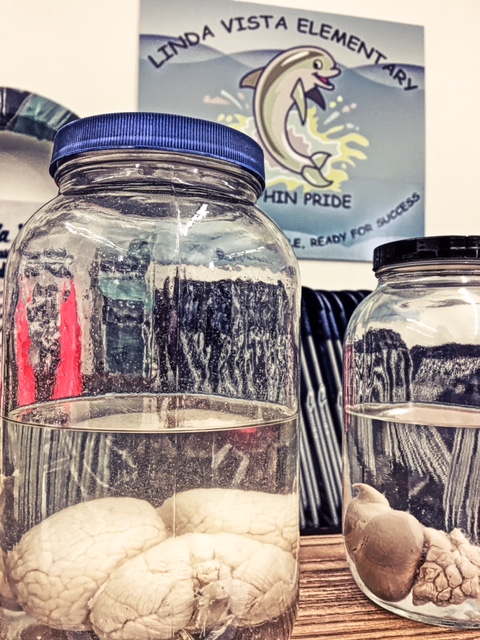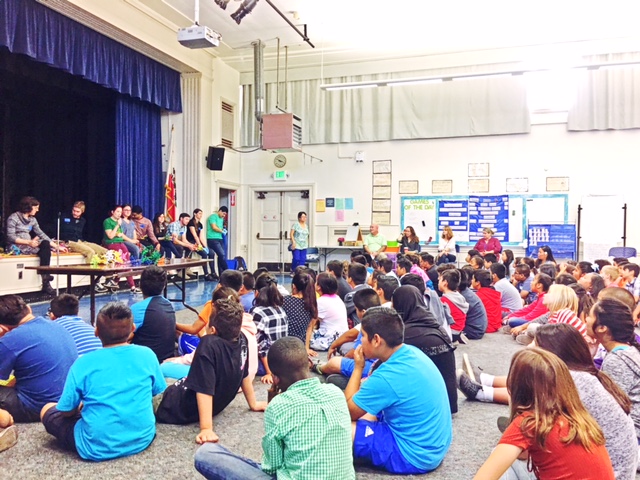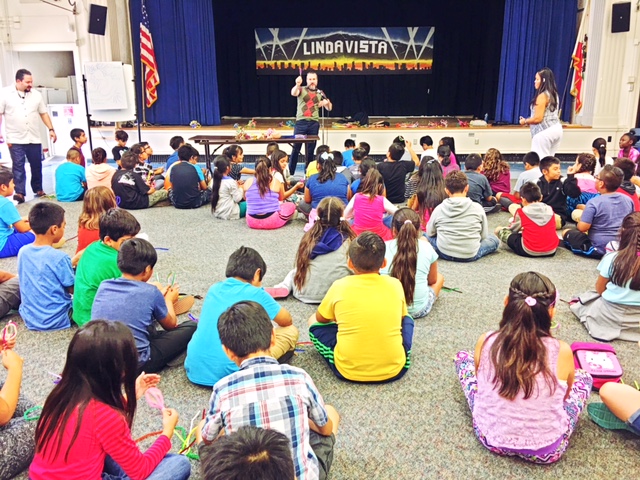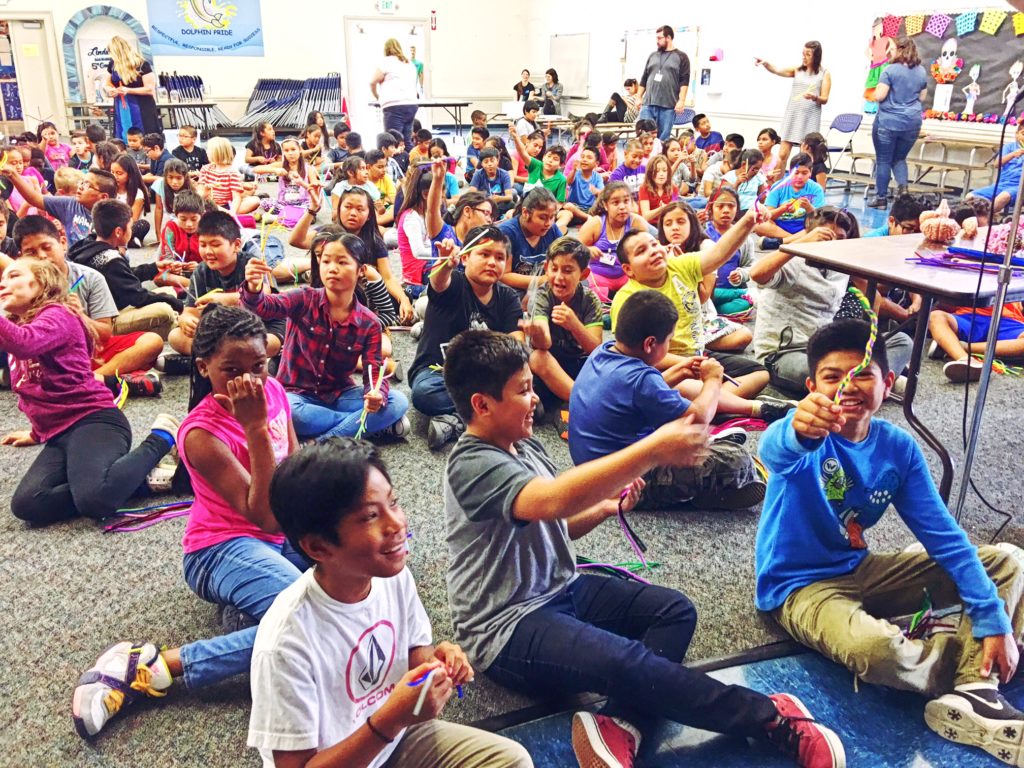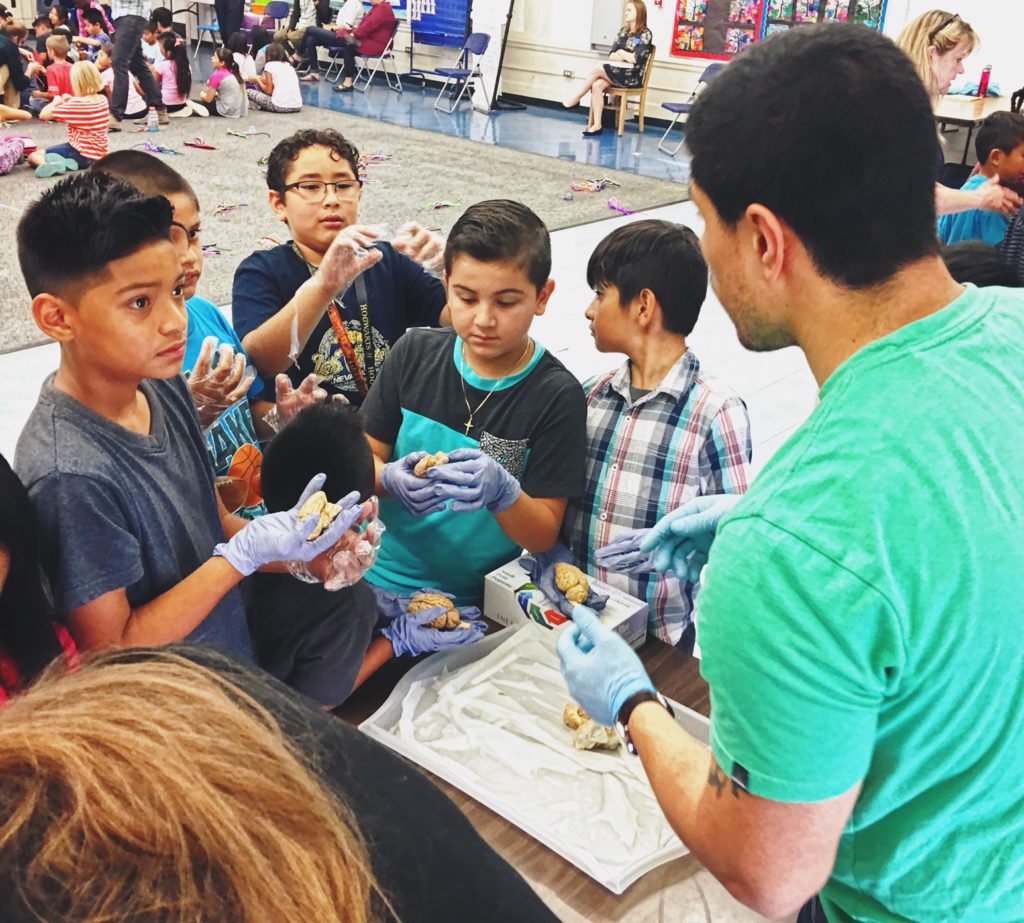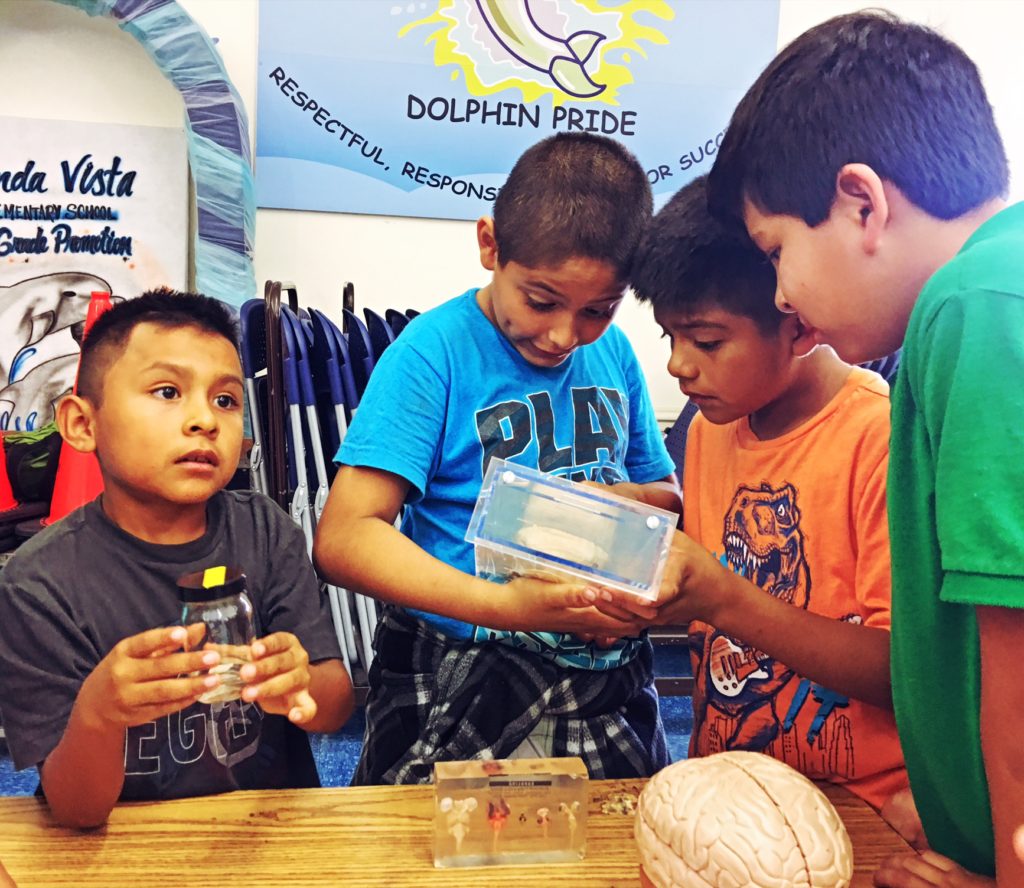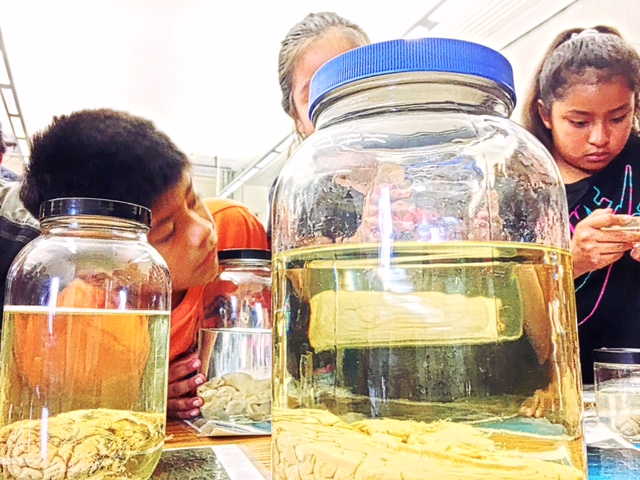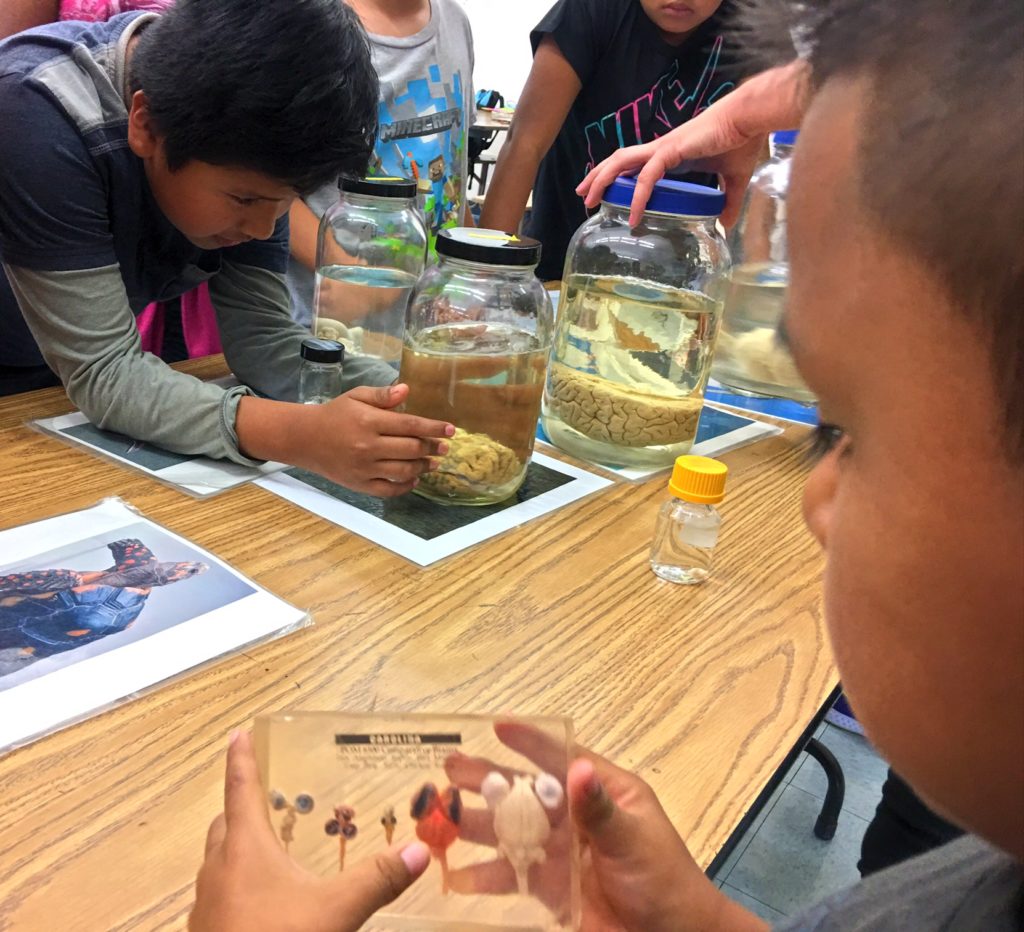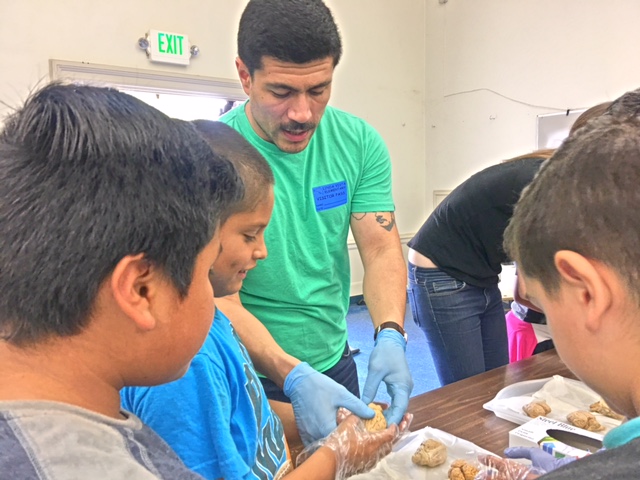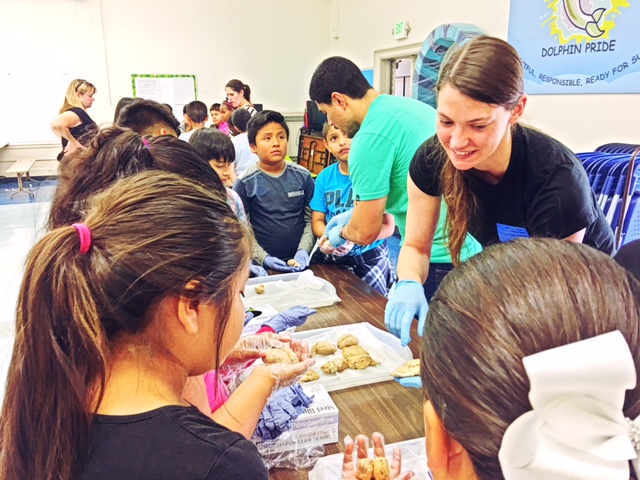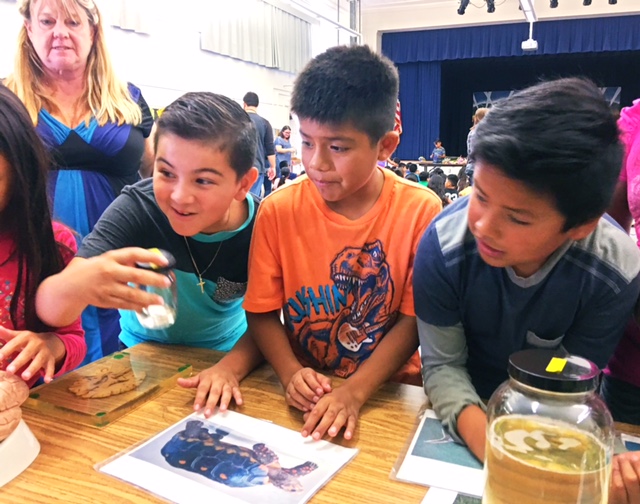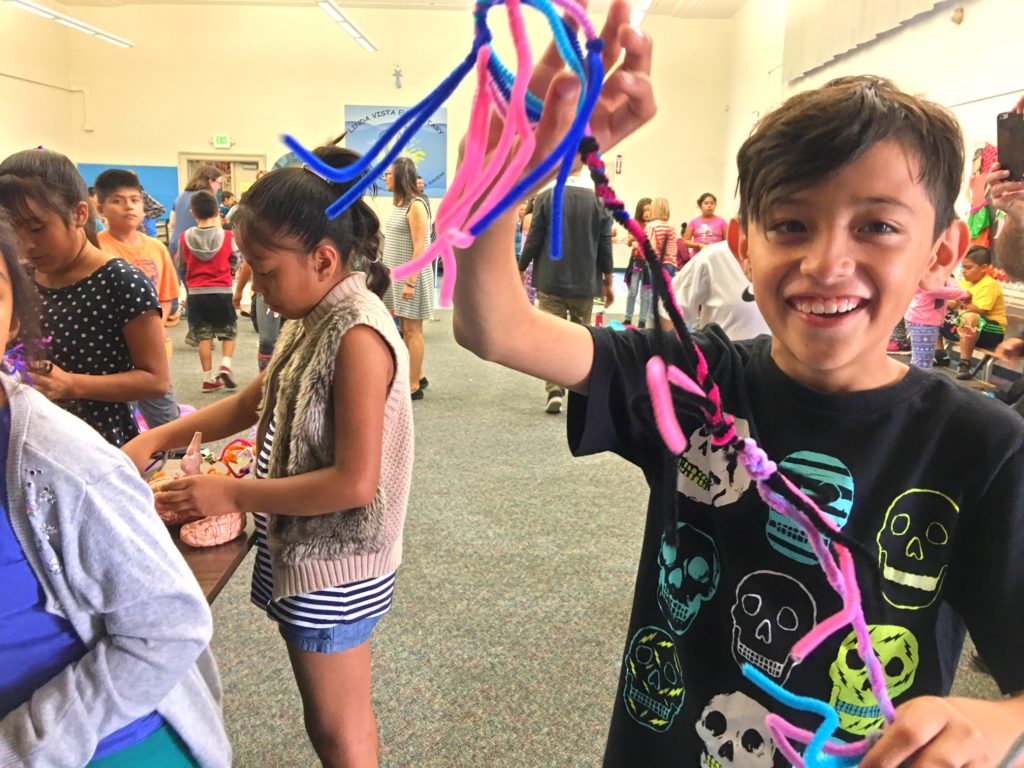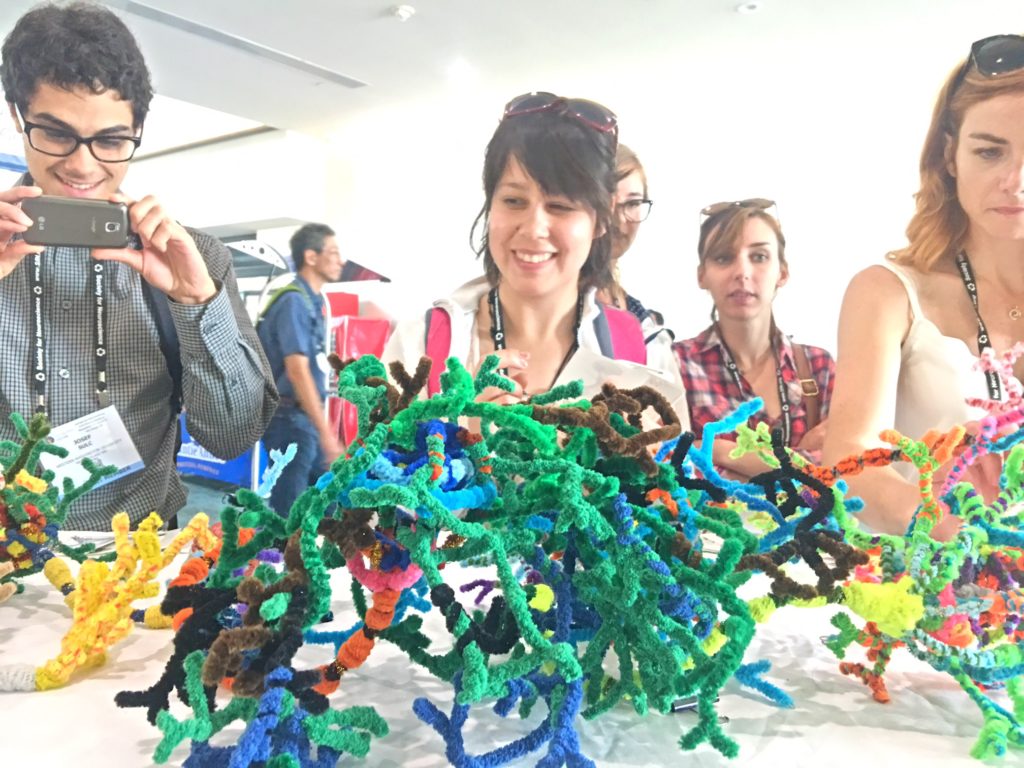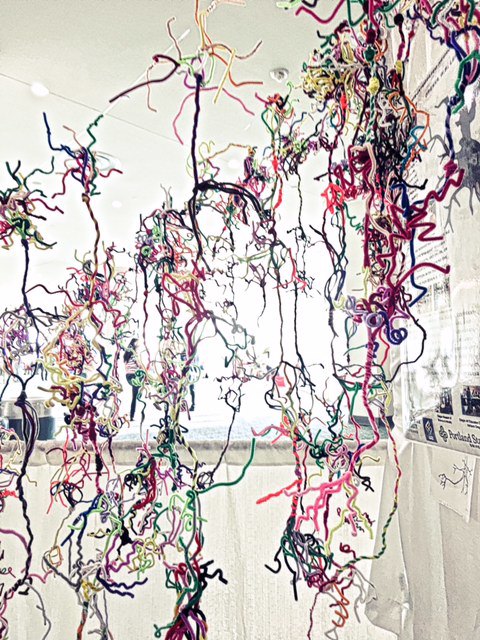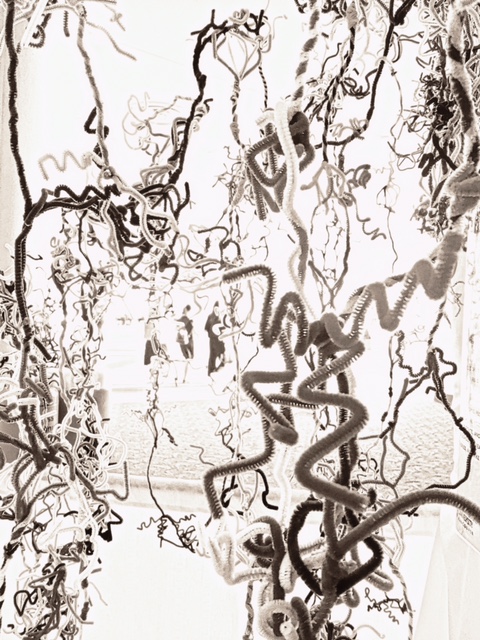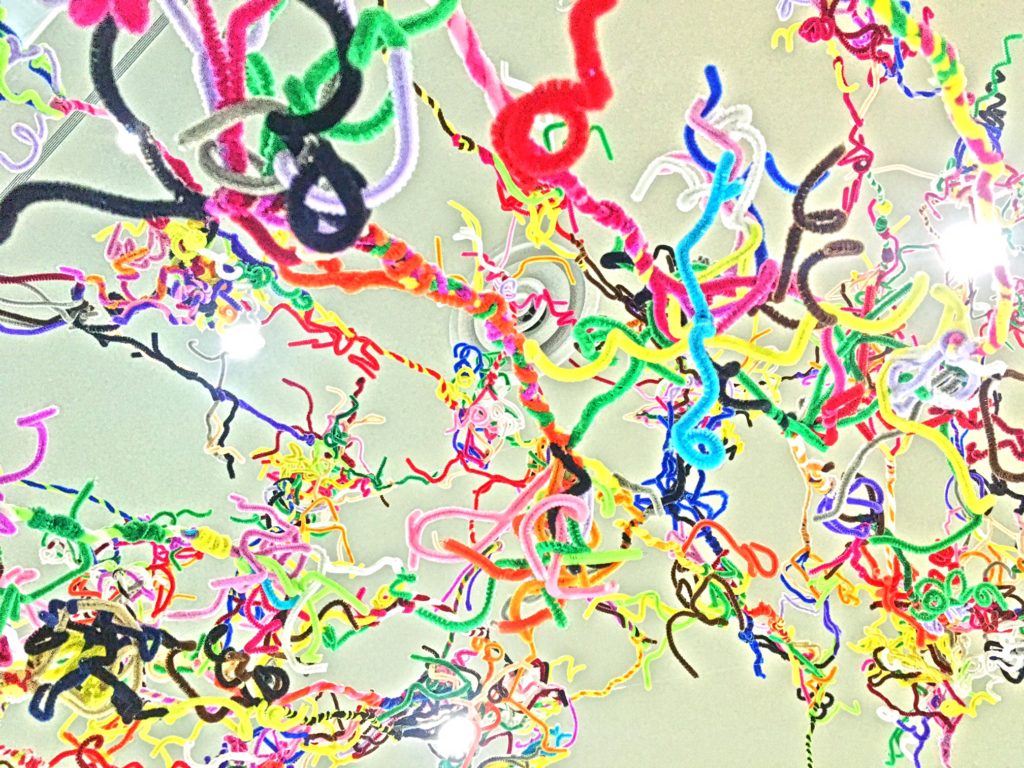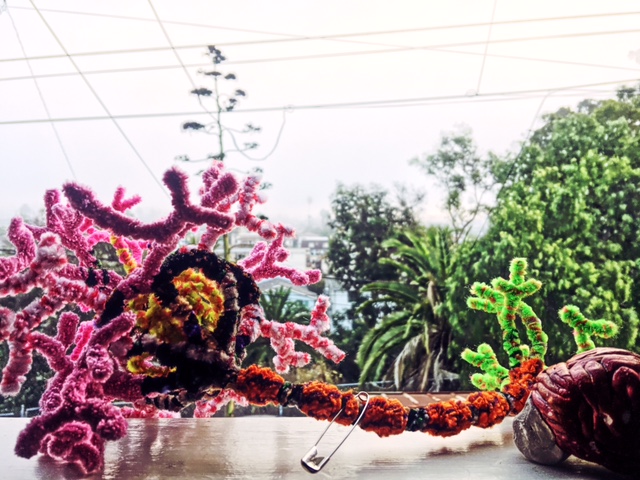After three enjoyable days of poster presentations, nano-symposia, exhibitor swag and excellent conversations with fellow neuroscience educators and SfN staff about arts integration in STEM…
And quite a lot of neuron selfies…
Bill Griesar, Jeff Leake, and their pipecleaner neurons represent at the #brainweek event. #nwnoggin #sfn16 pic.twitter.com/BkCKLUjZN1
— The Dana Foundation (@dana_fdn) November 13, 2016
EXPLORE MORE: Synapses in San Diego, Noggin @ SfN
…we happily rescued our accomplished NW Noggin volunteers from the limitless carpeted hallways and ballrooms of the San Diego Convention Center and plunged them into classrooms in the San Diego Public Schools!
It is one thing to present posters and talk about brain awareness with 35,000 brain researchers at the stimulating Society for Neuroscience conference, but quite another to make connections with public school teachers, parents, kids – and bring young scientists directly into the community to teach about their own brain research through art!
We partnered this time with UC San Diego Neuroscience, and the tireless Caroline Sferazza, a Graduate Fellow who introduced a striking collection of animal brains, including porpoise and penguin, human and cow..!
Caroline (left) with Jefferson parent volunteer and artist Maria Elena Cruz…
Caroline joined Noggin participants Allie Clark from Psychology at Portland State University, Dr. John Harkness and Alexandria Camino from Neuroscience at WSU Vancouver, Dr. Morgan Wirthlin from Carnegie Mellon University (formerly of OHSU), Dr. Amanda Barkeley-Levenson from UC San Diego Psychiatry (also formerly from OHSU), and Scott Jones, Alfredo Zuniga, Rebecca Hood and Andre Walcott from OHSU Behavioral Neuroscience, who volunteered their time and energy to meet with 250 enthusiastic 4th and 5th grade students at Jefferson Elementary and Linda Vista Elementary on a sunny San Diego morning…
We began the day at Jefferson, divided into three classrooms, and introduced ourselves and what we do, and study. Our graduate participants had practiced explaining their research – on Parkinson’s disease, brain development, the genetics of songbird communication, hearing loss, cocaine addiction, alcoholism – in accessible terms…
These kids knew plenty! When discussing the nature of energy and its conversion from the electromagnetic spectra of visible light to current flow in neurons, we brought up animals that are active primarily at night. One girl asked “do you mean nocturnal?”
Why yes we did!
Noggin Arts Coordinator Jeff Leake then introduced the art project for the day, our venerable pipe cleaner neurons, which we promised would hang as a colorful network at the Society for Neuroscience conference later that afternoon…
MAKE YOUR OWN NEURONS
LEARN MORE: pipe-cleaner-neuron-project-background
CREATE: how-to-make-a-pipe-cleaner-neuron
Meanwhile Caroline, Scott and Rebecca thrived in an educational onslaught of excited, curious 4th and 5th graders eager to hold, examine and ask questions about UCSD’s impressive collection of brains..!
We thoroughly respected the porpoise brain (in the foreground; half a human in back!)
EXPLORE MORE: Cetaceans Have Complex Brains for Complex Cognition
We then moved by uber and Lyft to Linda Vista Elementary – whose mascot is a dolphin!
EXPLORE MORE: What’s the difference between dolphins and porpoises?
Once again we described our backgrounds, this time to 140 4th and 5th graders at once!
It was a joy to watch Alfredo Zuniga introduce himself, and hear shouts of “hey, I’m Alfredo too!” from several kids in the auditorium! Alex Camino from WSU Vancouver also enjoyed introducing el cerebro and las neuronas to these accomplished students at Linda Vista, many of whom were fluent in both Spanish and ingles…
Jeff again introduced the neuron project…
And Alfredo, Rebecca and Caroline were the brain wranglers!
We had art…
And science – several students told us they’d like to be neuroscientists! Happily, Emma Lindberg from SfN was there with Brain Facts books as gifts for the classroom…
After an exhilarating five hours of pipe cleaners and brains, we returned to our Noggin booth at the Convention Center, and were able to construct a pretty dramatic neural network thanks to the creative students at Jefferson and Linda Vista…
Allie Clark from Portland State University (above right) paid her own way to the conference, and spent days staffing our popular Art of Neuroscience table outside Ballroom 20! (Allie is also quite an accomplished pipe cleaner neuron artist
For hours we fielded questions from curious neuroscientists, who were thrilled to see (and photograph!) the network, and learn about the 4th and 5th grade artists from San Diego Public Schools. “They’re irresistible!” exclaimed one researcher…
With certain filters, we discovered, the network looked Golgi-stained!
EXPLORE MORE: The Golgi Stain: invention, diffusion and impact on neurosciences
Many thanks to Caroline Sferazza, the staff, teachers and students of Jefferson and Linda Vista, and Rob Corona from San Diego Unified School District Office of School Innovations, who arranged our visits and emailed the following: “This has been hands down one of the best experiences I have had in connection with the schools… thank you so much!”
Thank you Caroline Sferrazza of @UCSDNeuro for the amazing brains @sdschools this week! #sfn16 https://t.co/uqfGEG0SEv pic.twitter.com/EoN2IjnGdJ
— N.W. Noggin (@NWNoggin) November 17, 2016






